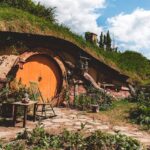Key Takeaways:
- Boracay Island successfully rebranded itself as a sustainable and eco-friendly beach destination.
- The rebranding efforts focused on improving environmental practices, such as banning single-use plastics and implementing waste management systems.
- Collaboration between the government, local businesses, and community members played a crucial role in the successful rebranding of Boracay Island.
- The rebranding campaign emphasized promoting responsible tourism and preserving the island’s natural beauty.
- Investments in infrastructure development and upgrading facilities were essential to support the rebranding efforts and enhance visitor experiences on Boracay Island.
Factors that led to the decision of rebranding Boracay Island as a beach destination
Boracay Island, located in the Philippines, was originally known for its vibrant nightlife and party scene. However, this image started to have negative consequences on the island’s tourism industry. The excessive development and overcrowding led to environmental degradation and a decline in the quality of the tourist experience. As a result, there was a need for a rebranding effort to shift the focus towards promoting Boracay as a pristine beach destination.
One of the key factors that led to this decision was the recognition that sustainable tourism practices were necessary to preserve the natural beauty of Boracay Island. The government and local authorities realized that they needed to take action in order to protect the environment and ensure the long-term viability of tourism on the island. This included implementing stricter regulations on construction and waste management, as well as promoting responsible tourism practices among visitors.
Another factor that influenced the decision to rebrand Boracay Island was market demand. While there was still a segment of tourists who enjoyed the party scene, there was also a growing number of travelers seeking more relaxed and nature-oriented experiences. By rebranding Boracay as a beach destination, it would be able to attract these types of tourists who were looking for pristine beaches, crystal-clear waters, and opportunities for outdoor activities such as snorkeling or hiking.
Factors leading to rebranding:
- Negative impact of previous image on tourism industry
- The need for sustainable tourism practices
- Market demand for nature-oriented experiences
Positive outcomes from rebranding:
- Preservation of natural beauty
- Increase in responsible tourism practices
- Attraction of new market segments
The impact of Boracay Island’s previous image on its tourism industry
Background
Boracay Island, located in the Philippines, was once known for its pristine beaches and crystal-clear waters. However, over time, it gained a reputation for overcrowding, pollution, and unregulated development. This negative image had a significant impact on the island’s tourism industry, leading to a decline in visitor numbers and revenue.
Effects on Tourism
The previous image of Boracay Island as an overcrowded and polluted destination deterred many potential tourists from visiting. The degradation of the environment also affected the quality of the tourist experience, with water activities being limited due to water pollution and overcrowded beaches diminishing the sense of relaxation and tranquility that visitors sought.
Moreover, international media coverage highlighting these issues further damaged Boracay Island’s reputation. Negative reviews and word-of-mouth recommendations discouraged travelers from choosing Boracay as their vacation destination.
To address these challenges and revive the tourism industry, a rebranding process was initiated.
Specific changes made during the rebranding process of Boracay Island
Closure and Rehabilitation
In 2018, Boracay Island underwent a six-month closure for rehabilitation. During this period, several measures were implemented to address environmental concerns. These included strict regulations on waste management, sewage treatment facilities improvement, and beach cleanup initiatives. The closure aimed to restore the island’s natural beauty and improve its infrastructure.
Tourism Carrying Capacity
To prevent overcrowding and ensure sustainable tourism practices, a carrying capacity policy was introduced. This involved limiting the number of daily visitors allowed on the island through a pre-booking system. Additionally, restrictions were placed on hotel accommodations to control tourist influx.
Infrastructure Development
The rebranding process also involved significant infrastructure development. This included the construction of a new sewage treatment plant, road improvements, and the implementation of a comprehensive solid waste management system. These measures aimed to enhance the island’s sustainability and overall visitor experience.
Overall, the rebranding process focused on improving environmental sustainability, implementing stricter regulations, and enhancing infrastructure to create a more attractive and responsible tourism destination.
Response of the local community and businesses to the rebranding efforts
Initial Resistance
At the beginning of the rebranding process, there was some resistance from local businesses who were concerned about potential losses during the closure period. Many relied heavily on tourism as their main source of income. However, as they witnessed the long-term benefits and improvements brought about by the rehabilitation efforts, support for the rebranding grew.
Collaboration with Stakeholders
The local community played a crucial role in supporting and implementing the rebranding efforts. Community engagement programs were established to educate residents about sustainable practices and involve them in decision-making processes. Local businesses also actively participated in initiatives such as beach cleanups and environmental awareness campaigns.
Economic Opportunities
As Boracay Island transitioned into a more sustainable destination, new economic opportunities emerged for local businesses. The focus on high-quality tourism experiences encouraged entrepreneurs to offer eco-friendly accommodations, water sports activities with minimal impact on marine life, and locally sourced dining options. This shift not only improved their revenue but also contributed to preserving Boracay’s natural beauty.
The response from both the local community and businesses demonstrated their commitment to creating a better future for Boracay Island through sustainable tourism practices.
Marketing strategies employed to promote the new image of Boracay Island
Collaboration with Influencers and Social Media Campaigns
One of the key marketing strategies employed to promote the new image of Boracay Island was a collaboration with popular travel influencers. These influencers were invited to experience the rejuvenated island and share their positive experiences on their social media platforms. This helped create buzz and generate interest among their followers, who were then inspired to visit Boracay themselves. Additionally, the destination launched targeted social media campaigns that showcased the island’s pristine beaches, vibrant nightlife, and sustainable tourism initiatives.
Partnerships with Travel Agencies and Tour Operators
To reach a wider audience, Boracay Island formed partnerships with travel agencies and tour operators both locally and internationally. These partnerships allowed for the inclusion of Boracay in various travel packages and itineraries, making it more accessible to potential visitors. The destination also provided training programs for travel agents to ensure they were well-informed about the rebranding efforts and could effectively promote the new image of Boracay Island to their clients.
The demographic shift in tourists attracted by the rebranding of Boracay Island
The rebranding of Boracay Island successfully attracted a shift in its tourist demographics. Previously known as a party destination primarily popular among young backpackers, the rejuvenation efforts aimed to appeal to a broader range of travelers. As a result, there has been an increase in families and luxury travelers visiting the island.
Families Seeking Relaxation and Activities
With improved infrastructure and amenities, Boracay now offers a range of family-friendly accommodations and activities. The introduction of water parks, kid-friendly resorts, and organized tours catered specifically towards families has led to an influx of visitors traveling with children.
Example activities and amenities for families:
– Family-friendly resorts with dedicated kids’ clubs and babysitting services
– Water sports activities suitable for all ages, such as snorkeling, paddleboarding, and kayaking
– Cultural experiences like traditional dance performances and local crafts workshops
Luxury Travelers Seeking Exclusivity
The rebranding efforts also attracted luxury travelers seeking exclusivity and high-end experiences. Upscale resorts were developed, offering private villas, personalized services, and world-class dining options. These developments have positioned Boracay Island as a desirable destination for those seeking luxury beach vacations.
Features appealing to luxury travelers:
– Private beachfront villas with personal butler service
– Fine dining restaurants showcasing international and local cuisine
– Exclusive spa facilities offering indulgent treatments
Challenges and obstacles faced during the rebranding process and how they were overcome
Environmental Rehabilitation and Sustainability
One of the major challenges faced during the rebranding process was the environmental rehabilitation of Boracay Island. The island had suffered from overdevelopment, pollution, and inadequate waste management systems. To overcome this challenge, strict regulations were implemented to protect the environment. This included limiting the number of tourists allowed on the island at any given time, enforcing sustainable tourism practices, and implementing proper waste management systems.
Measures taken to ensure sustainability:
– Introduction of a carrying capacity limit to control visitor numbers
– Implementation of strict building codes to prevent overdevelopment
– Collaboration with local communities to raise awareness about environmental conservation
Managing Stakeholder Expectations
Another obstacle faced during the rebranding process was managing stakeholder expectations. Local businesses heavily reliant on tourism revenue were concerned about potential negative impacts on their livelihoods during the rehabilitation period. To address this, the government and tourism authorities actively engaged with stakeholders through consultations and provided support in terms of financial assistance, training programs, and alternative livelihood opportunities.
Actions taken to manage stakeholder expectations:
– Regular communication and transparency about the rehabilitation plans
– Financial support for affected businesses during the temporary closure period
– Training programs to enhance skills and diversify offerings for local communities
The impact of Boracay Island’s rebranding on tourism revenue and visitor numbers
The rebranding efforts have had a significant impact on Boracay Island’s tourism revenue and visitor numbers. The destination has experienced a surge in both domestic and international tourists since the completion of the rebranding process.
Increase in Tourism Revenue
The rejuvenation of Boracay Island has resulted in a substantial increase in tourism revenue. The introduction of luxury accommodations, upscale dining options, and curated experiences has attracted high-spending travelers, contributing to higher average daily expenditures. Additionally, the implementation of sustainable tourism practices has positioned Boracay as an environmentally conscious destination, further appealing to responsible travelers.
Rise in Visitor Numbers
Following the rebranding efforts, Boracay Island has witnessed a significant rise in visitor numbers. The broader appeal created by targeting families and luxury travelers has diversified the tourist demographic. Moreover, effective marketing campaigns highlighting the island’s new image have successfully attracted attention from both domestic and international markets.
Lessons for other beach destinations from Boracay Island’s successful rebranding
Boracay Island’s successful rebranding offers valuable lessons for other beach destinations looking to revitalize their image or attract a different demographic of tourists.
Investment in Infrastructure Development
One key lesson is the importance of investing in infrastructure development that caters to various traveler preferences. Upgrading accommodations, transportation systems, and recreational facilities can enhance the overall visitor experience and attract a wider range of tourists.
Examples of infrastructure development:
– Building family-friendly resorts with dedicated amenities for children
– Developing luxury accommodations with exclusive features and services
– Expanding transportation options to improve accessibility
Collaboration with Influencers and Social Media Marketing
Boracay Island’s success in collaborating with influencers and leveraging social media platforms highlights the power of digital marketing. Partnering with influential individuals who align with the destination’s new image can significantly increase brand exposure and generate interest among potential visitors.
Steps for effective influencer collaborations:
– Identify relevant travel influencers with engaged audiences
– Offer unique experiences or exclusive access to showcase the destination
– Encourage influencers to share authentic content that resonates with their followers
Sustainability as a Key Focus
The emphasis on environmental rehabilitation and sustainable tourism practices has been instrumental in Boracay Island’s rebranding success. Other beach destinations can learn from this approach by prioritizing sustainability efforts, implementing eco-friendly initiatives, and engaging local communities in conservation efforts.
Key sustainability initiatives:
– Implementing waste management systems to minimize pollution
– Educating tourists about responsible behavior through signage and campaigns
– Collaborating with local organizations for beach clean-ups and environmental awareness programs
In conclusion, the rebranding of Boracay Island as a beach destination has proven to be a successful strategy. The efforts to improve sustainability, infrastructure, and tourism offerings have revitalized the island’s image and attracted a more discerning and responsible traveler base. With its pristine beaches, vibrant nightlife, and commitment to environmental conservation, Boracay Island has emerged as a premier beach destination in the region.
Why did Boracay fail as a top tourist destination?
The water in Boracay was contaminated by oil from boats, litter from the beach, and the illegal discharge of sewage into the sea. In 2018, then-President Rodrigo Duterte, who is known for his unconventional methods, referred to Boracay as a “cesspool” and closed it down abruptly from April to October.
What is the main problem in Boracay?
Boracay is a popular tourist destination in the Philippines that is facing significant damage to its coral reefs, fisheries, residents, and tourists due to the decline in water quality caused by unregulated development and sewage.
What issues were caused by overtourism in Boracay beach?
The island faced a significant pollution problem, largely because of the absence of a proper sewage system. In certain beaches, the water even contained harmful bacteria like faecal coliform.
What is it about Boracay that makes the destination stand out among other destinations?
Boracay is known for its beautiful white sand beaches and nearby islands, stunning sunsets, exciting water activities, luxurious resorts (including family-friendly hotels), and vibrant nightlife. This makes it a highly sought-after tourist destination in the Philippines and one of the top spots to visit in the Visayas region.
What was the major problem that Boracay encountered in the 1990s how was this problem solved?
In response to the coliform crisis, the Philippine Tourism Authority (PTA) created a plan to enhance the water supply and sewerage systems on the island. To implement the plan, PTA secured funding from JICA in 1995. By the time the project became operational in 2003, the upgraded water facilities were able to provide clean water to approximately 9,000 individuals.
What are the disadvantages of closing Boracay?
While the closure of Boracay was beneficial for protecting the environment, it had negative consequences for over 30,000 residents, including 17,000 employed in the hospitality industry and another 17,000 informal workers. These individuals faced the risks of being displaced, suffering financial losses, and experiencing starvation.





